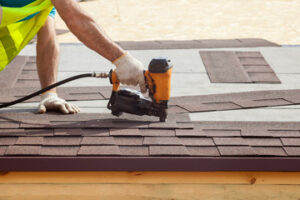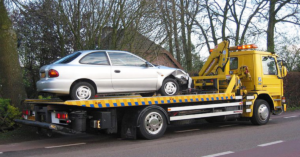Damaged, moldy, or old insulation can present a number of health and structural issues. It also provides nesting sites for pests and other pollutants that can harm indoor air quality.
Replacing or repairing insulation can help improve a home or business’s energy efficiency and reduce heating and cooling costs. In this article, we’ll discuss why and how to remove insulation. Click https://www.perthinsulationremover.com.au/ to learn more.

If you notice that your insulation is contaminated with mold, it’s important to immediately remove it and clean the area. If left untreated, moldy insulation can lead to health issues and structural damage to your home. Fortunately, there are several steps that you can take to get rid of mold in your insulation.
First, you’ll need to isolate the area where the mold is growing. This can be done by sealing off the area with plastic sheeting or other materials. Once the area has been isolated, you’ll need to wash the moldy insulation with a solution of detergent and bleach. You’ll also need to allow the insulation to dry completely in a sunny spot. Once the insulation is dry, you’ll need to spray it with a fungicide to prevent further mold growth.
While cleaning the insulation, it’s important to wear rubber or latex gloves and a respirator mask. Mold spores can be extremely harmful to individuals with compromised immune systems and may cause allergic reactions in some people. It’s also important to open household windows and doors to ventilate the area while you’re working. If you notice any signs of respiratory irritation, stop work and call a doctor immediately.
Moldy insulation can be cleaned with an EPA-registered fungicide. This can be sprayed directly on the insulation or on the wood studs where the mold is growing. Be sure to read the label carefully to ensure that the fungicide is safe for use in your home. If you’re unsure whether or not the fungicide is safe, you should consult a professional mold remediation specialist.
The most common sign of moldy insulation is a musty smell. However, moldy insulation can also have a fuzzy or slimy texture. In addition, mold growth may be accompanied by staining or discoloration. If you suspect that you have a mold problem in your home, it’s important to schedule an inspection with a mold remediation specialist as soon as possible.
Homeowners who have a DIY project in mind for their attic can find insulation removal equipment online or at local hardware stores. However, homeowners should not attempt to remove their own insulation if they are not familiar with the proper safety measures. In addition, they should only purchase insulation that has been tested for asbestos by a qualified professional.
Replacing Insulation
Insulation plays an important role in your home’s energy efficiency, preventing heat and air from escaping your living spaces. Over time, insulation can degrade due to age or damage and may need to be replaced. This can be a good time to upgrade to a new type of insulation that offers improved energy efficiency or other benefits.
Older types of insulation can also be damaged or contaminated by pests and other factors, posing health risks for your family. Contaminated insulation can release harmful particles into the air, causing respiratory issues such as allergies and asthma.
The best way to keep your family safe and your home healthy is to have the damaged insulation removed and replace it with new blown in insulation. This can improve your home’s energy efficiency, help lower your utility bills, and retain the value of your property.
Removing insulation can be a time-consuming process, depending on the size and condition of your attic or crawl space, the type of insulation being removed, and the removal method used. Professional insulation removal services can reduce the amount of work required, saving you both time and money.
Some types of insulation are easier to remove than others. Fiberglass and cellulose insulation in the form of rolls or batts are relatively easy to remove, as they can be simply pulled out of the attic and placed into garbage bags for disposal. Spray foam insulation is one of the more difficult types to remove, requiring a knife or saw and specialized equipment.
Once the old insulation has been removed, it should be disposed of properly to avoid environmental hazards. Your local waste management organization should be able to provide information on how to dispose of contaminated insulation materials. Professional insulation removal services can take care of this step for you, following guidelines for environmentally friendly disposal and helping you ensure a clean and safe attic or crawl space. This can also help you minimize the risk of mold or rodent infestations in the future. A post removal inspection can be conducted to ensure that all potential hazards have been eliminated from your attic or crawlspace.
Getting Rid of Pests
Insulation can help prevent pests from nesting in attics, crawl spaces and basements. These rodents can chew on electrical wires, contaminate food and wreak havoc on the structure of a home. Rodents also spread diseases that can be transmitted to humans. It is important to remove and replace contaminated insulation in affected areas of the home.
Mice are notorious for gaining access to attics through small cracks and holes. They breed rapidly and leave behind droppings and urine. These contaminants can cause mold and odor in the attic. Additionally, they can also spread a number of harmful diseases such as Lymphocytic Choriomeningitis and Hantavirus. Mice may also damage insulation and chew on the structural components of a house.
To properly replace contaminated insulation, you will need to use a large vacuum system that can suck the old insulation away without disturbing any of the other materials in the attic. This system is typically gas-powered and has a long hose to reach from the attic to the vacuum outside of the home. It is important to wear protective gear when removing contaminated insulation. A dust mask or respirator, gloves and goggles should be worn to prevent irritation from the fibers of the insulation.
Removing and replacing insulation is a messy process that requires careful planning and execution. It is best left to professionals who can complete the task safely and efficiently. In addition to the insulation removal, a professional will install new blown-in, energy efficient insulation with a pest control feature.
A pest control feature works by coating the new insulation with a boron-based compressed fiber that kills pests when they come into contact with it. The borates disrupt the insects’ gut bacteria and inhibits their ability to process nutrients, killing them. While this type of insulation is not guaranteed to stop larger pests such as raccoons from entering your home, it will be effective in keeping them out of the attic and other areas of the house.
If you suspect that your insulation is contaminated with rodent droppings or urine, call Critter Stop immediately. The reputable pest control company will take an integrated approach to rodent extermination, eliminating the infestation and preventing future ones from occurring.
Preventing Structural Damage
Insulation is an essential part of any home, but it can be damaged by a variety of factors. Damaged insulation can lead to poor indoor air quality, pest infestations, and structural damage. In addition, aging or damaged insulation can contribute to higher energy bills. Insulation removal can help to address these issues and restore a healthy environment.
During the insulation removal process, professionals thoroughly inspect the home’s structure and existing materials to ensure safety and efficiency. They also remove any potentially hazardous substances and dispose of them according to local regulations. This prevents additional damage to the property and saves homeowners money on costly repairs.
The restoration professionals can then install new insulation that is effective in reducing energy costs, improving indoor air quality, and preventing mold growth and other health problems. In addition, the professionals can reinforce any areas that may be prone to water damage in the future.
Wet insulation can cause mold growth, pest infestations, and a number of other problems that affect a home’s comfort and energy efficiency. Having wet insulation removed and restored quickly is important to protect a home from these damages and maintain its energy efficiency.
When you’re ready to have your insulation removed and replaced, be sure to choose a contractor that has years of experience in the industry. They should have a solid reputation and be licensed and insured to work on your home. Read reviews online to get a feel for the company’s customer service and quality of work. If possible, request references from past clients to determine whether the contractor is a good fit for your needs.
When a home is in the process of remodeling or being renovated, it’s often necessary to have its old insulation removed and replaced before starting construction. This is because some remodeling projects may change the walls, ceilings, and floors where insulation is installed. Insulation removal is a complex task that requires the expertise of professional technicians. Fortunately, there are plenty of companies that specialize in this service and can provide you with top-quality results at an affordable price.








